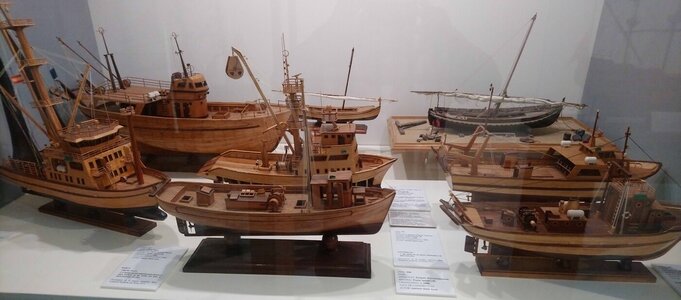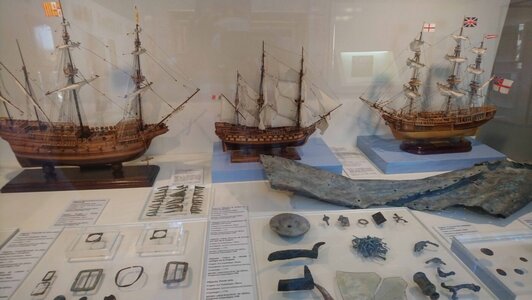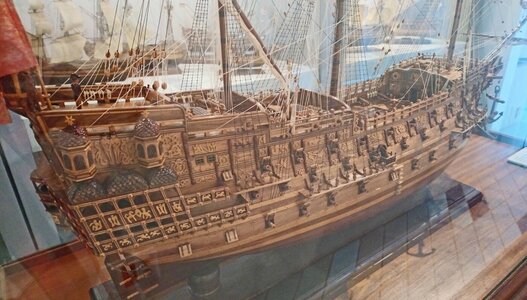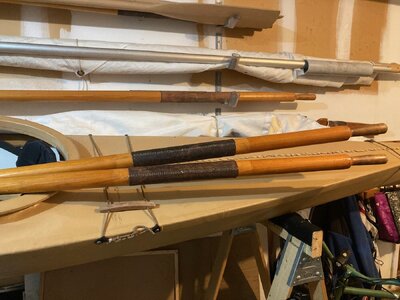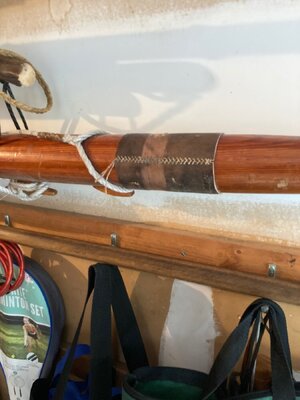I have just returned from Denia, a very old Spanish port on the "Costa Blanca" on the Mediterranean coast, where the "The Galleon, Andalusia", a 15c replica of "Generic" Spanish merchant Galleon was visiting. Building started in around 2006/7 and finally finished in 2011, it has since sailed around the world, so many of you might well have seen it and been on board yourselves. I am truly in awe of those early sailors who crossed the oceans in such boats, and even todays sailors who still sail her, all be it with some help of modern day equipment.
There are however some questions that I wanted to be answered but unfortunately the staff on duty on the day of my visit could not answer. Perhaps some of you might know the answers.
1. As you can see from my photos there are vertical ribs on the outside of the hull, but on all the model Spanish boats I have seen hardly any if at all are constructed this way. Has this been done to strengthen this replica galleon or was it a particular design of the type and period in the 15/16c?
2. On several of the posts, as can be seen in my photos, the ropes go through the pillars on metal pullies and are then tied directly around the top of the post, not a Belay pin in sight!!
3. A lot of leather is used on this replica boat to cover the tops of posts or part of rails, was this a common practice on wood boats?
Whilst I appreciate that to slot posts and fit them with metal pullies as well as make leather caps on model boat is not practical or possible for many of us, I am interested in the answers.
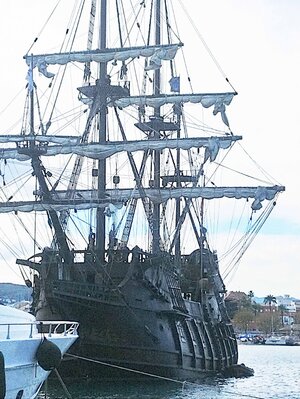
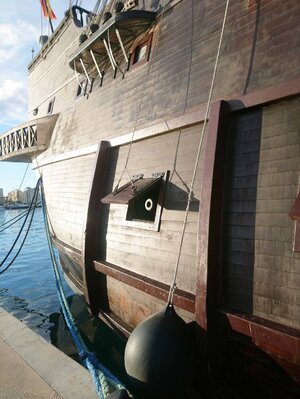
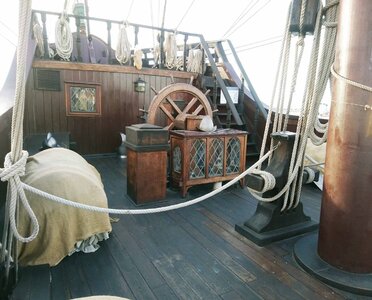
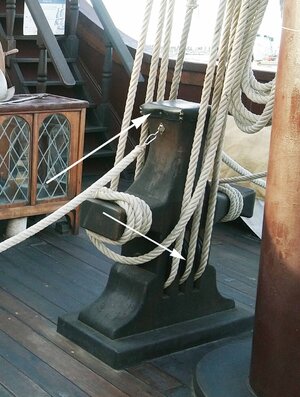
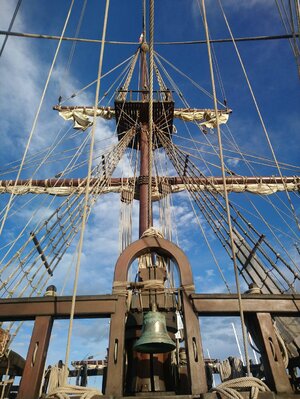
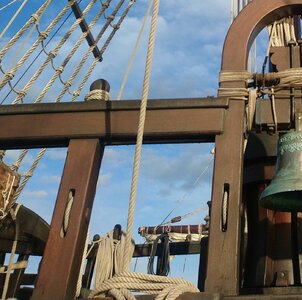
There are however some questions that I wanted to be answered but unfortunately the staff on duty on the day of my visit could not answer. Perhaps some of you might know the answers.
1. As you can see from my photos there are vertical ribs on the outside of the hull, but on all the model Spanish boats I have seen hardly any if at all are constructed this way. Has this been done to strengthen this replica galleon or was it a particular design of the type and period in the 15/16c?
2. On several of the posts, as can be seen in my photos, the ropes go through the pillars on metal pullies and are then tied directly around the top of the post, not a Belay pin in sight!!
3. A lot of leather is used on this replica boat to cover the tops of posts or part of rails, was this a common practice on wood boats?
Whilst I appreciate that to slot posts and fit them with metal pullies as well as make leather caps on model boat is not practical or possible for many of us, I am interested in the answers.










